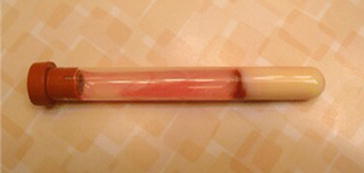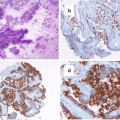and Sergio Fazio2
(1)
Assistant Professor of Pediatrics, Division of Pediatric Endocrinology, University of Mississippi School of Medicine, 2500 North State Street, Jackson, MS 39216, USA
(2)
William and Sonja Connor Chair of Preventive Cardiology, Professor of Medicine and Physiology & Pharmacology, Director, Center of Preventive Cardiology, Knight Cardiovascular Institute, Oregon Health and Science University, 3181 SW Sam Jackson Park Rd, Portland, 97239, Oregon, USA
Keywords
Severe hypertriglyceridemiaAbdominal painDysmenorrheaMenstrual crampsZoloftContraceptive patchPremenstrual dysphoric disorderObjectives
1.
To discuss a case of acute pancreatitis caused by severe hypertriglyceridemia.
2.
To review the stressors that can cause significant hypertriglyceridemia in susceptible individuals.
3.
To position the clinical presentation of pancreatitis as a corollary to diabetic ketoacidosis.
Case Presentation
A 14-year-old girl presented to the emergency department with excruciating abdominal pain. She had a history of dysmenorrhea, so her family had attributed her symptoms to menstrual cramps, but when the pain escalated to intolerable levels, they sought medical evaluation. The pain was mostly on the left upper abdominal quadrant and radiated to the back. She had vomiting and anorexia but no fever; review of systems also revealed a 15-pound weight loss over the preceding month as well as polyuria and polydipsia. Her medications included Zoloft and a contraceptive patch, both to treat premenstrual dysphoric disorder. Family history was significant for maternal Crohn’s disease and type-1 diabetes mellitus. Physical exam revealed pallor, tachycardia, and abdominal tenderness with voluntary guarding. An initial lab revealed pH 7.12 and glucose 321 mg/dL with a base excess of −20.4, all consistent with new-onset diabetes mellitus with diabetic ketoacidosis (DKA). She showed an apparent severe hyponatremia.
Further laboratory evaluation was desired, so a complete metabolic panel, amylase, lipase, and complete blood count were ordered along with typical new-onset diabetes mellitus labs. The laboratory technician noted that the serum was extremely lipemic and alerted the ordering physician (Fig. 48.1). Total triglycerides were measured at 7,528 mg/dL. Lipase was extremely elevated at >800 mg/dL (normal 10–60), whereas amylase was barely elevated at 48 mg/dL (normal 5–45). C-peptide was low, antiglutamic acid decarboxylase antibodies were strongly positive, and hemoglobin A1c was measured at 11 % (normal <6.5 %). Repeat physical exam revealed no xanthomas or lipemia retinalis; there was no acanthosis nigricans. Limited abdominal ultrasound did not visualize the pancreas but identified focal fatty infiltration of the liver at the bifurcation of the portal vein.


Fig. 48.1
Patient’s lipemic serum
The patient was made NPO and placed on an insulin drip at 0.1 units/kg/h along with dextrose-containing IV fluids to correct her acidosis while allowing her blood sugar to correct slowly. After 24 h, her acidosis and hyperglycemia had resolved, and her triglycerides had fallen to 4,014 mg/dL. She was started on total parenteral nutrition without lipids and multiple daily insulin injections. Within 48 h, triglycerides were 1,279 mg/dL and her abdominal pain had improved significantly. Her diet was advanced slowly until she tolerated a low-fat, low-refined carbohydrate diet, and her triglycerides were 747 mg/dL at discharge home. She was not prescribed a triglyceride-lowering medication and was encouraged to supplement her diet with 3–4 g of omega 3 fats. Upon return to the diabetes clinic 1 month later, triglycerides were 295 mg/dL with blood sugars close to goal for age. Her sodium level had normalized.
How the Diagnosis Was Made
Given the context of the clinical presentation, with much attention placed on the DKA, the clinical suspicion for hypertriglyceridemia causing pancreatitis was not raised until the laboratory called the care team to report a lipemic sample. At admission, this girl’s severe abdominal pain had been thought to be secondary to ketosis. The differential for pancreatitis, however, must always include chylomicronemia, the condition leading to elevations in triglycerides above 1,000 mg/dL. In adult patients, pancreatitis is most commonly caused by biliary obstruction, side effect from medications, and alcohol abuse [1]. In the pediatric population, the etiology of pancreatitis is more variable and includes drug-induced pancreatitis, congenital anatomical abnormalities, infection, trauma, and cystic fibrosis [2]. Hypertriglyceridemia is a rare but important cause of pancreatitis in all ages, particularly in patients with diabetes mellitus or personal or family history of hyperlipidemia. Triglycerides elevations above 1,000 mg/dL are always caused by a failure of lipoprotein lipase (LPL) action, which can be due to genetic or environmental causes, in most cases by a combination of both. Though hypertriglyceridemia is seen in 12–22 % of patients with pancreatitis [3], the elevated triglycerides are not thought to be causative unless >1,000 mg/dL [4]; in our experience, triglyceride levels >2,000 mg/dL are usually necessary before induction of pancreatitis. It must be remembered that even forms of pancreatitis not secondary to hypertriglyceridemia are accompanied by mild to moderate elevations in triglycerides, often a puzzling finding for clinicians who have little experience in management of genetic dyslipidemia. There is no need for genetic testing or advanced lipid investigations, as the picture of pancreatitis with severe hypertriglyceridemia nails the causality link and triggers a standardized series of therapeutic maneuvers. This case is typical in showing drastic reductions in triglycerides while the patient was NPO in hospital, with an average daily drop of about 50 %. The remaining mild hypertriglyceridemia seen at follow-up suggests the presence of a genetic underpinning, maybe a heterozygous mutation in LPL.
Stay updated, free articles. Join our Telegram channel

Full access? Get Clinical Tree




